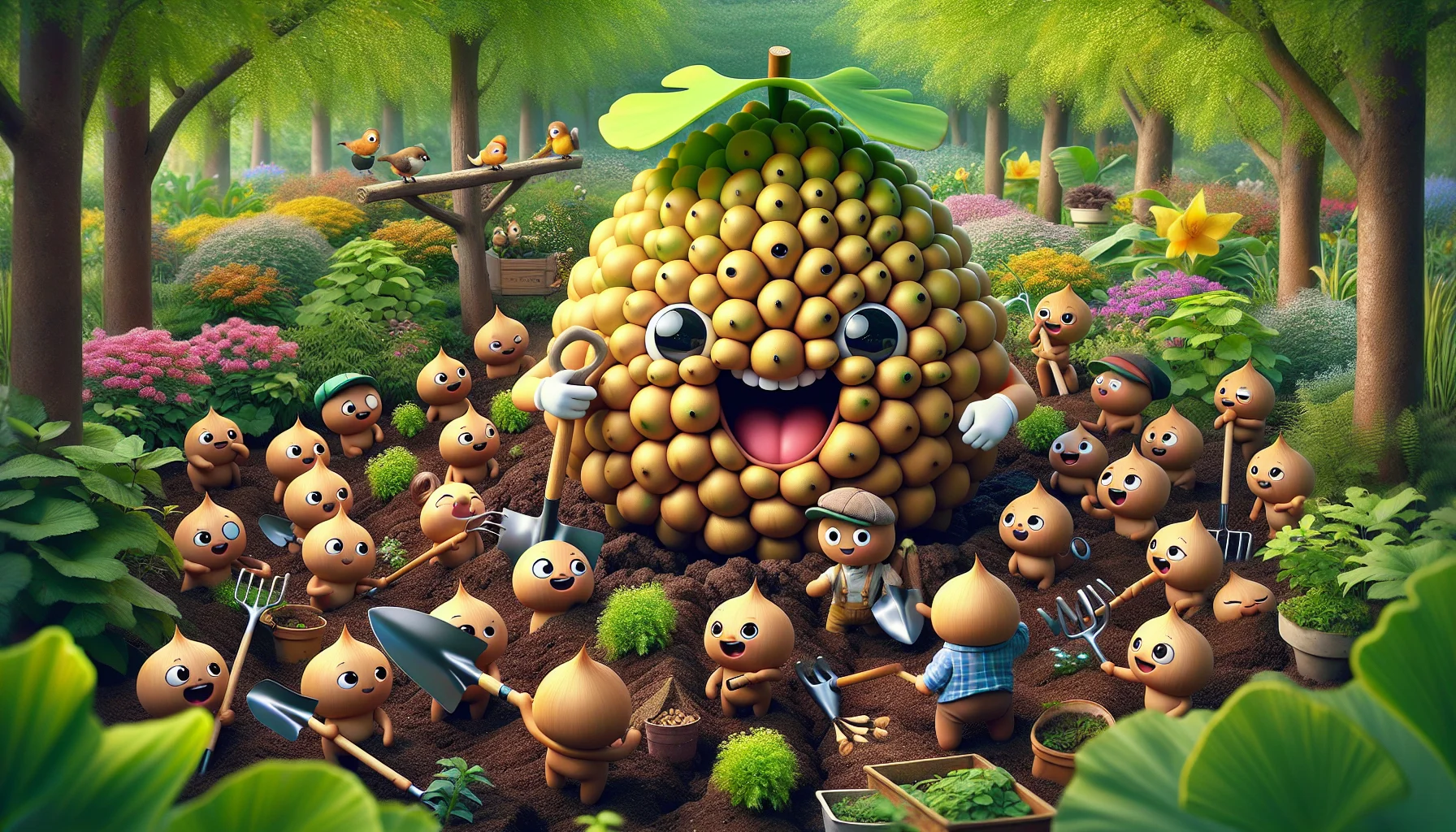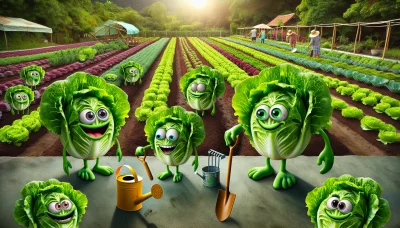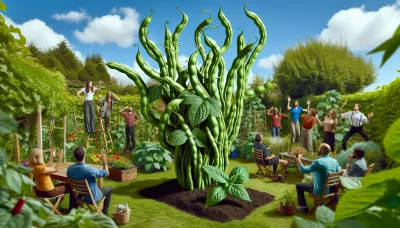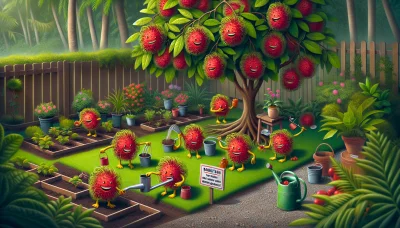Ginkgo berry Quiz
Test Your Knowledge
Question of
Introduction to Ginkgo Berries
Ginkgo berries come from the Ginkgo biloba tree, one of the oldest tree species in the world, with origins tracing back over 250 million years. These berries are actually the seeds of the Ginkgo tree, encased in a fleshy outer layer. Native to China, Ginkgo biloba has been cultivated for centuries for its various uses in traditional medicine and culinary applications. The berries themselves are small, with a soft, edible inner part surrounded by a tough, inedible outer skin. They are known for their distinctive smell, often described as unpleasant, and their bright yellow or orange color when ripe. Despite the odor, the seeds inside the berries are considered a delicacy in some cultures, though they must be cooked properly to neutralize potentially harmful compounds.
The Benefits of Ginkgo Berries in Gardening
Ginkgo berries, derived from the ancient ginkgo biloba tree, offer a multitude of benefits for gardening enthusiasts. Despite their somewhat unpleasant smell, these berries are a powerhouse of nutrients that can significantly improve soil health. Rich in organic matter, when decomposed, ginkgo berries release beneficial nutrients into the soil, thus enhancing its fertility and structure. This process encourages the growth of a healthy root system for all garden plants. Additionally, the presence of ginkgo berries in the garden can attract beneficial insects that play a crucial role in pollination and the natural control of pests. Their unique properties also make them an excellent natural mulch, providing moisture retention and temperature regulation for the soil. Embracing ginkgo berries in gardening not only promotes a sustainable ecosystem but also leverages ancient natural benefits to modern gardening practices.
How to Plant and Grow Ginkgo Berries
- Choose the Right Location: Ginkgo trees thrive in full sun to partial shade and can adapt to a variety of soil types, though well-draining soil is ideal.
- Soil Preparation: Amend the planting site with compost to improve soil fertility and drainage. Ensure the soil pH is between 5.0 and 7.5 for optimal growth.
- Planting: Plant ginkgo trees in the spring or early fall. Dig a hole twice as wide and just as deep as the root ball. Place the tree in the hole, ensuring it's level with the ground, and backfill with soil.
- Watering: Water the ginkgo tree deeply after planting. Maintain consistent moisture, especially during the first few years of growth. Once established, ginkgo trees are quite drought tolerant.
- Mulching: Apply a 2-3 inch layer of mulch around the base of the tree to retain soil moisture and regulate temperature. Keep the mulch a few inches away from the trunk to prevent rot.
- Fertilizing: Feed your ginkgo tree with a balanced fertilizer in early spring before new growth begins. Avoid over-fertilizing, which can harm the tree.
- Pruning: Prune ginkgo trees in the winter or early spring to remove any dead or damaged branches and to shape the tree. Ginkgo trees require minimal pruning.
- Monitoring for Pests and Diseases: Ginkgo trees are relatively resistant to pests and diseases. However, it's important to regularly check for any signs of trouble and address them promptly.
- Harvesting Ginkgo Berries: Once the tree matures and begins to produce fruit, typically after 20-35 years, the berries can be collected in the fall. Be cautious, as the flesh of the berries can cause skin irritation.
- Enjoying Your Ginkgo Tree: Beyond the berries, ginkgo trees are known for their beautiful fan-shaped leaves that turn a stunning yellow in the fall, making them a picturesque addition to any garden.
Common Challenges in Growing Ginkgo Berries
Growing ginkgo berries can be a rewarding endeavor, but it comes with its own set of challenges that gardeners need to be aware of. One of the primary issues is the ginkgo tree's slow growth rate, which requires patience and long-term commitment. To mitigate this, it's essential to ensure that your ginkgo tree is planted in well-draining soil and a location that receives ample sunlight. Another significant challenge is the unpleasant odor emitted by the fallen berries, which can be quite off-putting. Regularly cleaning up fallen berries can help manage this issue. Additionally, ginkgo trees can be sensitive to certain soil conditions, such as overly wet or compacted soils, leading to root rot or inhibited growth. Ensuring proper soil aeration and drainage can help overcome this problem. Lastly, pests and diseases, though relatively rare in ginkgo trees, can occur. Keeping an eye out for signs of distress and applying appropriate treatments or preventive measures can help maintain the health of your ginkgo trees, allowing you to enjoy the unique beauty and benefits they offer.
Harvesting and Storing Ginkgo Berries
Best Practices for Harvesting Ginkgo Berries
- Wait for the right time: Harvest ginkgo berries in the fall when they are ripe and have fallen to the ground.
- Wear gloves: The flesh of ginkgo berries can cause skin irritation, so it's advisable to wear gloves when handling them.
- Collect carefully: Gently pick up the berries from the ground, avoiding any that are damaged or overly soft.
- Separate the seed: Remove the outer flesh of the berry to reveal the inner seed, which is what you'll be storing.
- Clean the seeds: Wash the seeds thoroughly to remove any remaining flesh, as it can spoil and affect the seed's viability.
Tips for Storing Ginkgo Berries
- Dry the seeds: After cleaning, let the seeds dry for a day or two to reduce the risk of mold growth during storage.
- Choose the right container: Store the seeds in a breathable container, such as a paper bag or a mesh bag, to allow air circulation.
- Maintain cool temperatures: Keep the seeds in a cool, dry place. A refrigerator can be ideal for long-term storage.
- Check periodically: Every few weeks, check the seeds for signs of mold or spoilage and remove any affected seeds.
- Consider stratification: If you plan to plant the seeds, stratifying them by simulating winter conditions in your refrigerator for 1-2 months can improve germination rates.
Ginkgo Berry Recipes for Gardeners
| Recipe Name | Ingredients | Basic Steps |
|---|---|---|
| Ginkgo Nut Tea | Ginkgo nuts, water, honey (optional) | Shell ginkgo nuts, crush lightly, boil in water for 10 minutes, strain, and add honey to taste. |
| Ginkgo Nut Roast | Ginkgo nuts, salt | Shell ginkgo nuts, boil for 5 minutes, dry, coat with salt, and roast at 300°F for 10-15 minutes. |
| Ginkgo Berry Jam | Ginkgo berries, sugar, lemon juice, water | Remove flesh from berries, mix with sugar and lemon juice, boil until thick, cool, and jar. |
| Ginkgo Leaf Salad | Ginkgo leaves (young), mixed greens, your choice of dressing | Blanch ginkgo leaves, mix with other greens, add dressing and serve. |
Conclusion: The Role of Ginkgo Berries in Sustainable Gardening
Ginkgo berries, derived from the ancient ginkgo biloba tree, play a significant role in sustainable gardening practices. These berries are not only beneficial for the soil, due to their nutrient-rich composition, but they also support local wildlife, providing food for birds and other animals. The cultivation of ginkgo trees contributes to biodiversity, enhancing the ecological balance within garden environments. Moreover, ginkgo trees are known for their resilience and ability to thrive in varied conditions, making them an ideal choice for sustainable landscapes. Their presence in gardens underscores a commitment to ecological stewardship and the promotion of a healthier planet.












